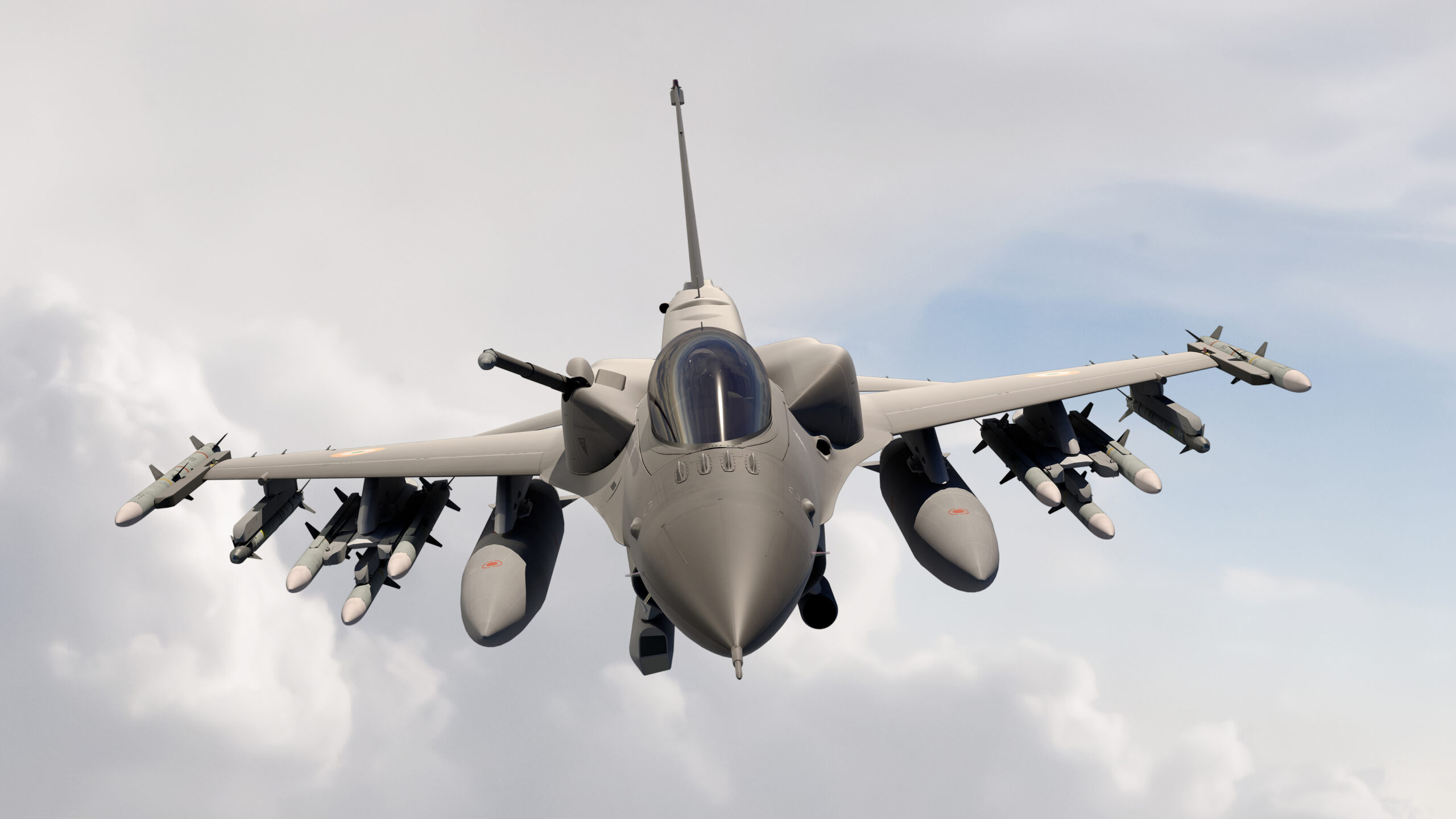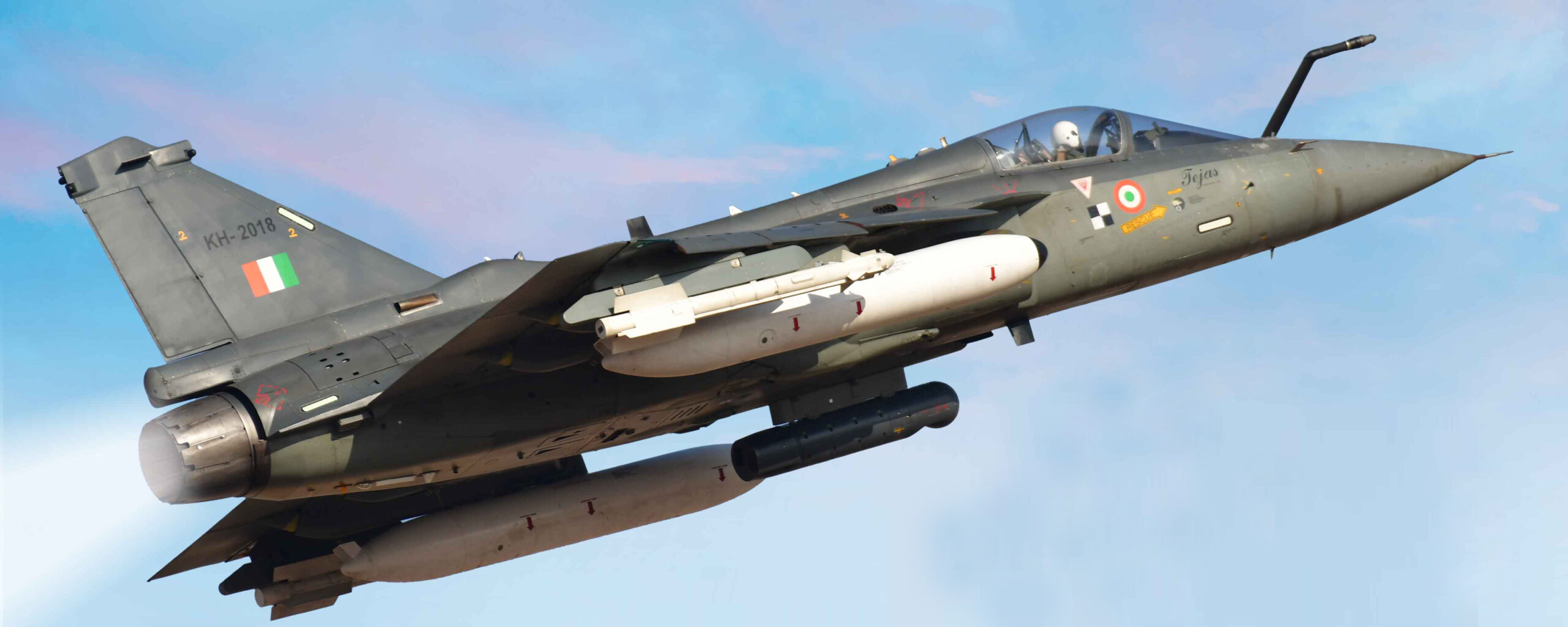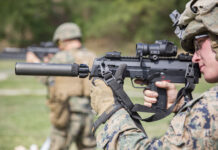As the Indian Air Force (IAF) enters its 91st year, an apparent ‘code-red’ seems to have been sounded by its top leadership over the declining fighter squadron strength, raising the questions around how many combat jets India has available and how many it needs to fight a war. Su-30MKI To deal with this historic drop in its air power, the IAF is scouting for foreign fighters, while also looking at indigenous options, thereby expediting the large multi-role fighter aircraft (MRFA) programme for 114 fighter jets.
The IAF’s Air Chief Marshal VR Chaudhari reiterated the grim picture over the plummeting squadron numbers in October 2022: “With the given numbers it may not be possible to maintain a 24/7 combat air patrol or an air defence watch from Sir Creek to Siachen and further to the East. So, the numbers definitely are essential, 42 will remain, though it’s a difficult goal to achieve in the next decade or so, we will review it only based on the situation arising in the neighbourhood. Based on the current situation, as per the mandate given to the IAF, it is essential that we build up the numbers.”
Currently down to just 31 fighter squadrons, making it roughly 18 fighters per squadron, the IAF’s predicament increases each year as combat aircraft retire. The fighter squadron strength of the IAF fell to 31 recently with the phasing out of the Srinagar-based MiG-21 Bison squadron. The force finds itself in desperate need of fighters, as its falling numbers are expected to present a challenge in the coming decades. The IAF’s requisite authorised strength is 42 squadrons, and squadron numbers are only expected to rise to 35-36 by the middle of the 2030s.
Owing to the ongoing Ukraine-Russia conflict, the IAF has deferred its orders for 21 more MiG-29s and 12 more Sukhoi Su-30MKIs from Russia.
Dwindling Numbers
The IAF Chief’s statement echoes what experts have been opining in the context of several units either getting ‘number-plated’ (wherein the unit is kept in service on paper, but its personnel are in fact sent out to other units) or are in the process of being so, in a process expected to last until the mid-2030s. For instance, the IAF’s twin-engine Jaguars are likely to be phased out by 2032-33, while the upgraded MiG-29s and the Mirage-2000 fleet will complete their shelf life and total technical life approximately by the same time. Adding to the IAF’s woes is the fact that in the next 15 years, multiple squadrons are due to be decommissioned, beginning with the three remaining MiG-21 Bison squadrons to be out of service by 2025.
In November 2022, on the sidelines of the Indo-French joint exercise Garuda VII in Jodhpur, IAF Chief Chaudhari had said that India will need about five-six squadrons of ‘4.5 generation’ fighter aircraft to accomplish the IAF’s immediate commitments. Some progress has been made on the domestic development front, with India recently including its home-grown Light Combat Aircraft (LCA) Tejas and the recently inducted light combat helicopter (LCH) ‘Prachand’ in the Indo-French exercise ‘Garuda VII’. This was the first time these aircraft have participated in an international exercise. While this shows some promise, India will need much more to plug its capability gaps.
With most fighter squadrons set to be phased out over the next decade and a half, the IAF has made it clear that there’s no question of reviewing its sanctioned strength of 42 fighter squadrons. However, the gap between the current strength and the target strength is somewhat greater than it appears. This is because despite the IAF maintaining a fleet strength of 31 squadrons on paper, the number is lower in reality, since the availability of some of the fighter types is less than 50%, due to serviceability issues and non-availability of spare parts.
Air Chief Chaudhari has clarified that despite the service looking at technology and quality of the fighter aircraft, raw numbers still matter. The IAF’s Air Vice Marshal Suresh Singh (retd) added, “If India must fight a war with China and Pakistan, then the numerical superiority is not in our favour. Although the man behind the machine is most important, but notwithstanding, we need to increase our combat aircraft on topmost priority.”

Credit: US Navy
The Threat Perception
The IAF’s present leadership has reiterated the importance of numbers in the wake of the burgeoning Chinese and Pakistani assets, stating that it is imperative to augment fleet strength to operate over a large region while facing adversaries possessing greater combined numbers.
Pakistan
There are reportedly 20 squadrons with 400 fighter jets in the Pakistan Air Force (PAF), with prospects of the number going up to 24-25 squadrons with vintage fighters being replaced by J-10C and JF-17 Block III, which are being inducted.
Recently US Congress’ clearance to supply a spares and maintenance package for F-16s is bound to lengthen the life of the PAF fighters, thereby augmenting the inventory with 75 F-16s, 50 J-10 C (two squadrons) and 250 JF-17s.
China
A rapidly rising China’s People’s Liberation Army Air Force (PLAAF) boasts a modern combat aircraft fleet, supplemented by capable ground-based air defence (GBAD) systems. The PLAAF’s present inventory comprises approximately 1,700 fighters, including 150 fifth-generation J-20s, and a second fifth-generation fighter FC-31/J-31 due to enter service over the short term. China has also made capital available for further modernisation of the Chinese armed forces.
While India does not regard the PAF as its primary threat, due to regarding it as air-defence oriented, nonetheless its close wargames with PLAAF have demonstrated interoperability, and present the possibility that the PLAAF could operate from Pakistani bases. This presents the IAF with the threat of a two-front conflict, complicating India’s defence in such a scenario.
IAF’s former Assistant chief of air Staff, Air Vice Marshal Manmohan Bahadur (retd) says, “Though numbers have their own value, the accretion of modern multi-role aircraft in the inventory offsets that to a great extent. The Air Chiefs have been quite clear in their statements that the threats have been catered-for in the IAF’s plans with the inventory at hand.”
According to security experts, the Indian armed forces are presently equipped to go to war simultaneously on both fronts, at 30 days (intense) and 60 days (normal) rates.
The IAF’s Current Combat Assets
The IAF operates an assorted fleet which is an aviation aficionado’s delight, drawn over the years from different parts of the world, from the MiG-21 ‘Bison’ fighter, to the 4.5 generation French Rafales. Faced with a shortfall of 11 squadrons and 200 fighters, the IAF currently operates 12 Sukhoi Su-30MKI, five Jaguar, three Mirage-2000, three MiG-29, two Rafale and two LCA squadrons, spread all over India.

Credit: US Air Force/Tech. Sgt. Nathan Lipscomb)
Dominant among IAF’s fleet is the Russian twin-engine Sukhoi Su-30MKI, of which around 270 are in service. These are license-produced by the state-owned Hindustan Aeronautics Limited (HAL), and were planned to undergo a major upgrade in electronics and weapons until the outbreak of the War in Ukraine. Indian Parliament was informed by a Standing Committee on Defence that an increase in availability rates of Su-30MKI and other fighters in service could counter some of the aircraft shortages in the interim.
Close on the heels of the Sukhoi Su-30MKI, in terms of numbers, are the vintage, twin-engine Anglo-French SEPECAT Jaguar strike aircraft, also built by HAL under license. About 130 Jaguars are currently in service in the IAF, with some of them configured for anti-ship operations. The six squadrons of the aging Jaguars are expected to be phased out by 2031-32.
The Russian MiG-29 twin-engine, multi-role fighter comes in third place, with 65 in service currently. The IAF Fulcrum fleet is due an upgrade to their weapons and sensors, thereby transforming them into modern combat platforms. The MiG-29 fleet is likely to be decommissioned by 2035.
At number four is the Soviet-era MiG-21 Bison, which is well past its prime. The last 54 of these MiG-21 vintage jets are due to be phased out of service by 2025.
The French Mirage-2000 are India’s most trusted combat aircraft, as their reliability was proven during the Indo-Pakistani Kargil conflict in 1999 and the more recent Balakot air strikes in 2019. A robust upgrade programme has helped them to keep pace with the modern battlefield. India’s Mirage-2000s are likely to retire from the IAF by 2035.
The IAF’s latest acquisition is the French Rafale twin-engine multi-role fighter, currently making up just two squadrons, one in the north and the other in the east, with 36 fighters bought under a fast-tracked contract in 2020. The Rafales have been used for combat air patrols in eastern Ladakh, where they played a key role in containing the situation at the Indo-China border, during the ongoing standoff, as they were operationalised within a few weeks of their arrival and induction.
The home-grown LCA Tejas single-engine fighter has been used to equip two squadrons based in the South of the country, with 30 aircraft currently in service, with an order of 83 more LCA Mk-1 in the pipeline. The IAF is also considering further orders for an improved LCA Tejas Mk-2 model.
MRFA: Will Foreign Fighters Dominate Indian Skies?
The multi-role fighter aircraft (MRFA) programme is India’s most ambitious ‘mother of all deals’, intended to reverse the decline in squadron strength. Under the international tender, India plans to acquire 114 multi-role fighters, equating to six squadrons, and valued at USD 20 Bn. The IAF is in the process of firming up MRFA’s technical and air staff qualitative requirements (ASQRs), after a Request for Information (RfI) was sent out to eight contenders, following which a Request for Proposal (RFP) is due to be issued soon.
This tender has been pending for a long time, as the Indian Government is said to be in talks with the original equipment manufacturers (OEMs) to boost indigenisation in combat jets towards a greater ‘Buy Global Make in India’ commitment. Under these plans, a portion of the fighters will be bought directly, while the remaining will be built in India under a joint venture with an Indian strategic production partner. The Indian government has clearly stated that the selected aircraft manufacturer will have to favour its ‘Buy Global Make in India’ initiative over the strategic partnership policy model to produce the fighters within the country.
The MRFA programme kicked off in 2018, with the following eight contenders responding to one of the biggest fighter purchases in the world.
Who Are the Contenders for the Big Prize?
1. Rafale from Dassault Aviation France – considered to have an edge by virtue of being in service already, this twin-engine fighter stands a good chance of winning as India has invested a large amount over infrastructure support for its present Rafale fleet. However, following the 2015 order for 36 jets, its chances have been negatively impacted in the wake of controversy surrounding the original deal. Despite this, other factors may play a greater role. For instance, the navalised Rafale-M has also been shortlisted for the Indian Navy’s carrier aircraft requirement, taking Rafale for both programmes would offer benefits to training, equipping, and maintenance through high commonality between the two fleets.
2. F-15 Eagle II from America’s Boeing Defence – this twin-engine aircraft is a surprise entrant in the competition. With an impressive combat track record, the F-15 is considered a formidable contender in the contest.
3. JAS 39 E/F Gripen from Sweden’s Saab – seen as an underdog, the single-engine Gripen is being pitched as the most cost-effective package. It remains to be seen whether this cost-friendly offering will make it to the next round.

Credit: Saab
4. Sukhoi Su-35 from Russia’s UAC – this twin-engine fighter is the latest from Sukhoi’s ‘Flanker’ family. Marketed as the logical next step for the IAF as it already operates a huge fleet of the Su-30MKIs, with benefits brought through commonality being a strong selling point. However, with Russia’s present diplomatic isolation, this would be less politically straightforward than the alternatives.
5. F-21 from the America’s Lockheed Martin – the single-engine F-21 is the latest and the most advanced version of the legacy F-16, with a proven active electronically scanned array (AESA) radar. Following rounds of twists and turns in the IAF’s earlier medium multi-role combat aircraft (MMRCA) contest, Lockheed rebranded the F-16 as ‘F-21’. The legacy F-16’s association with Pakistan has often created roadblocks for Lockheed’s sales pitch to India, who now believes it has a fair chance in the contest owing to the present US Government’s backing.

Credit: Lockheed Martin
6. Eurofighter Typhoon from European Consortium Eurofighter GmbH – this twin-engine jet built by a four-nation consortium led by Airbus, was a co-frontrunner in the earlier MMRCA contest, but lost out to the Rafale in the final down-select, and led the Typhoon manufacturers to claim that their rejection was on unfair grounds.
7. F/A-18E/F Super Hornet from Boeing Defence – this twin-engine fighter, with an AESA radar, represents a capable aircraft which is also a contender in the Indian Navy’s carrier-based order contest along with the Rafale-M. The Super Hornet has been in the running for the IAF’s contract for a decade and a half.
8. MiG-35 from Russia’s UAC – this twin-engine multirole fighter is considered as having the least chance of success. It is a heavily-modernised version of the legacy MiG-29 fighter, which is already in service in the IAF, but the IAF has made it clear to the Government that its future fighter is unlikely to be MiG.
India’s Indigenous Programmes
India’s thrust towards its ‘Make in India’ initiative aimed at ‘ÁtmaNirbhar Bharat’ (ENG: Self-Reliant India), is driven by two programmes: the LCA Tejas single-engine indigenous fighter and the Advanced Medium Combat Aircraft (AMCA) twin-engine, fifth-generation multi-role aircraft.
LCA Tejas
At present, 30 LCA Tejas jets are in service with two squadrons in southern India, with 16 Tejas fighters inducted in their initial operational clearance (IOC) version, and 14 in the final operational clearance (FOC) version. The IAF is also expected to get the remaining 10 LCA jets of the first lot of 40 delivered in 2023.
IAF’s latest order with HAL for 83 LCA Tejas Mk-1s is due to start deliveries in the next two years, while IAF has plans to order more of the advanced LCA Tejas Mk-2 aircraft, in the near future. The 83 LCA Mk-1 would help replace the MiG series of fighters such as the MiG-23, MiG-27 and MiG-21s. The LCA Tejas Mk-2 is under development by the state-owned Defence Research and Development Organisation (DRDO), and is expected to complete development and flight testing by 2027.

Credit: DRDO
AMCA
The AMCA is being developed indigenously by DRDO and due to be produced by HAL. The aircraft is expected to roll out for trials by 2030. This fifth-generation, twin-engine, multirole, low-observable fighter is due to have a maximum take-off weight in the 25 tonne category, and includes a number of fifth-generation features including Diverterless Supersonic Inlets (DSIs), serpentine intakes an internal weapons bay, and thrust vectoring engines. At present, the AMCA still in the design phase.
The Way Forward
Regarding the IAF’s future, Air Marshal Anil Chopra (retd.), Director-General, Centre for Air Power Studies (CAPS), New Delhi, sounded optimistic, stating: “I assess that the IAF could reach 42 squadrons by 2038 only if the nation takes a resolution and all actions go by plan. The end state could be 14 squadrons of Su-30 MKI, two each of Mirage 2000 and MiG 29, 12 squadrons of LCA variants, two of Rafale, six of the new fighters, and four of Advanced Medium Combat Aircraft (AMCA). This would make it 42.”
According to the IAF’s claims, so far there has been no shortage of spares due to the ongoing Russia-Ukraine war. IAF Chief Chaudhari has tried to put fears over readiness to rest by going on record to state: “We have domestically procured 62,000 spares and components in the last few years. Our dependence on Ukraine and Russia is reducing. We are confident with domestic industry stepping up, we will be able to overcome any shortfall in spares that we have been traditionally getting from Russia and Ukraine.”
Approximately 24,000 medium, small and micro enterprises (MSMEs) are presently engaged with the defence sector in India, with more than 500 licenses issued to private defence manufacturers and the numbers are rapidly increasing. Aiming at reducing defence imports from 70 percent to 40 percent, the ‘Defence Production and Export Promotion Policy 2020’ was formulated to boost self-reliance in India’s defence production. While such signs are broadly positive, only time will tell if these will be sufficient to meet India’s growing domestic demands as well as its ambitions on the export market.
Suman Sharma




![BVRAAMs: Closing the horizon This photo showing a piece of the wreckage of an Indian Rafale, serial number ‘BS 001’, showed up on social media shortly after the IAF’s night operations of 6/7 May 2025. [Vigorous Falcon X Account]](https://euro-sd.com/wp-content/uploads/2025/06/Rafale-Wreckage-Piece_Vigorous-Falcon-X-Account-Kopie-218x150.jpg)







